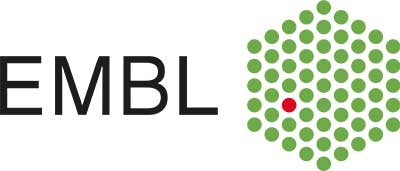The goal of modern analytical (bio)-chemistry is to sequence (bio-)molecules and reveal their 3D microscopic structures. Mass Spectrometry (MS), one of the essential analytical method in the gas phase domain, is commonly (orthogonally) coupled to techniques such as e.g. chromatography and electrophoretic separation, Ion Mobility Spectrometry (IMS), activation methods, and spectroscopies. Among these orthogonal couplings to MS, infrared (IR) action spectroscopy is one of the very few techniques providing direct information into atomistic 3D-structures, with the paradigm of 1-to-1 spectral fingerprints – 3D-structure relationships. The past five years have seen the MS-IR gas phase community embark on the challenge of high-throughput analytical chemistry of bio-oligomers of relevance in biological processes. Decoding IR signatures (i.e. band- positions, intensities and shapes) into a microscopic 3D-structure is however non-trivial and cannot be accomplished from experiments alone for complex flexible (bio)-molecules. Theoretical chemistry calculations have to be employed, which is the expertise of the Gaigeot group by employing AIMD/DFT-MD simulations for the calculation and assignment of anharmonic vibrational spectra, for very diverse molecular systems, i.e. gas phase molecules and clusters, liquids, solid/liquid interfaces.
This PhD project focuses on the characterization of the 3D-structures of (very) large glycan oligomers (of high interest in biological recognition in general, an expertise in our lab) in order to make the systematic 1-to-1 assignments between structures and IR signatures. To that end, AIMD/DFT-MD simulations will be applied, together with the application of our developed methods for extracting and decoding the IR vibrational modes.
To be high throughput and applied routinely, i.e. applied in a few minutes only, the decoding of the IR signatures into a 3D-structure has however to be done in a completely different theoretical way. We are currently developing innovative theoretical methods based on graph theory, machine/deep learning, AI, from computer science, in our bi-disciplinary team made with the group of Prof. Dominique Barth at the University Paris-Saclay (expert in graph theory and AI techniques). In the present PhD, the first applications of these new methods to the IR-decoding will be done. If interested, the PhD student will directly participate to the on-going developments of the graph theory and machine-/deep- learning methods.
The package CP2K is used for the AIMD simulations, codes developed in our group are used for the analyses and the extraction of structural/dynamical/spectroscopic properties from the trajectories. For those interested, theoretical developments can be considered and/or development of codes for trajectory analyses. Developments in synergy with Graph Theory and AI are part of this project for those interested.
Our group is internationally recognized in AIMD/DFT-MD simulations of gas phase molecules, liquids and solid/liquid interfaces. The following references illustrate some of our recent original works and innovative developments for gas phase IR spectroscopy and Graph Theory methods [Chem. Rev. 120: 3233-3260 (2020), Faraday Discussions 217:67 (2019), J. Chem. Phys. 149:184102-15 (2018), J. Chem. Theory. Comput.,13:3802 (2017), Phys. Chem. Chem. Phys., 19:13778 (2017)].
Our group is composed of five permanent academic researchers, 1 Engineer in informatics, four PhDs (Chinese, Italians, French), one postdoc, M1/M2 Master’s students, foreign visitors. Our group is internationally recognized and funded by several French national ANR and LABEX research programmes, e.g. bilateral ANR-NSF/USA, ANR-DFG/Germany & LABEX CHARM3AT. Our university is a member of the larger University Paris-Saclay. The city of Evry is located 45 minutes from the centre of Paris via RER D train line or 30 minutes from Paris-Saclay via bus. The University is a two-minute walk from the RER station Evry-Courcouronnes. See www.univ-evry.fr/accueil.html for more practical details.
PhD Supervisor: Professor Marie-Pierre GAIGEOT
Contacts: mgaigeot@univ-evry.fr.
Research Group ‘Theory & Modeling’ Laboratory LAMBE UMR 8587, Laboratoire Analyse et Modélisation pour la Biologie et l’Environnement, Université d’Evry val d’Essonne, Blvd F. Mitterrand, Bat Maupertuis, 91025 EVRY & Université Paris-Saclay – France.
Expired






